I agree Our site saves small pieces of text information (cookies) on your device in order to deliver better content and for statistical purposes. You can disable the usage of cookies by changing the settings of your browser. By browsing our website without changing the browser settings you grant us permission to store that information on your device.
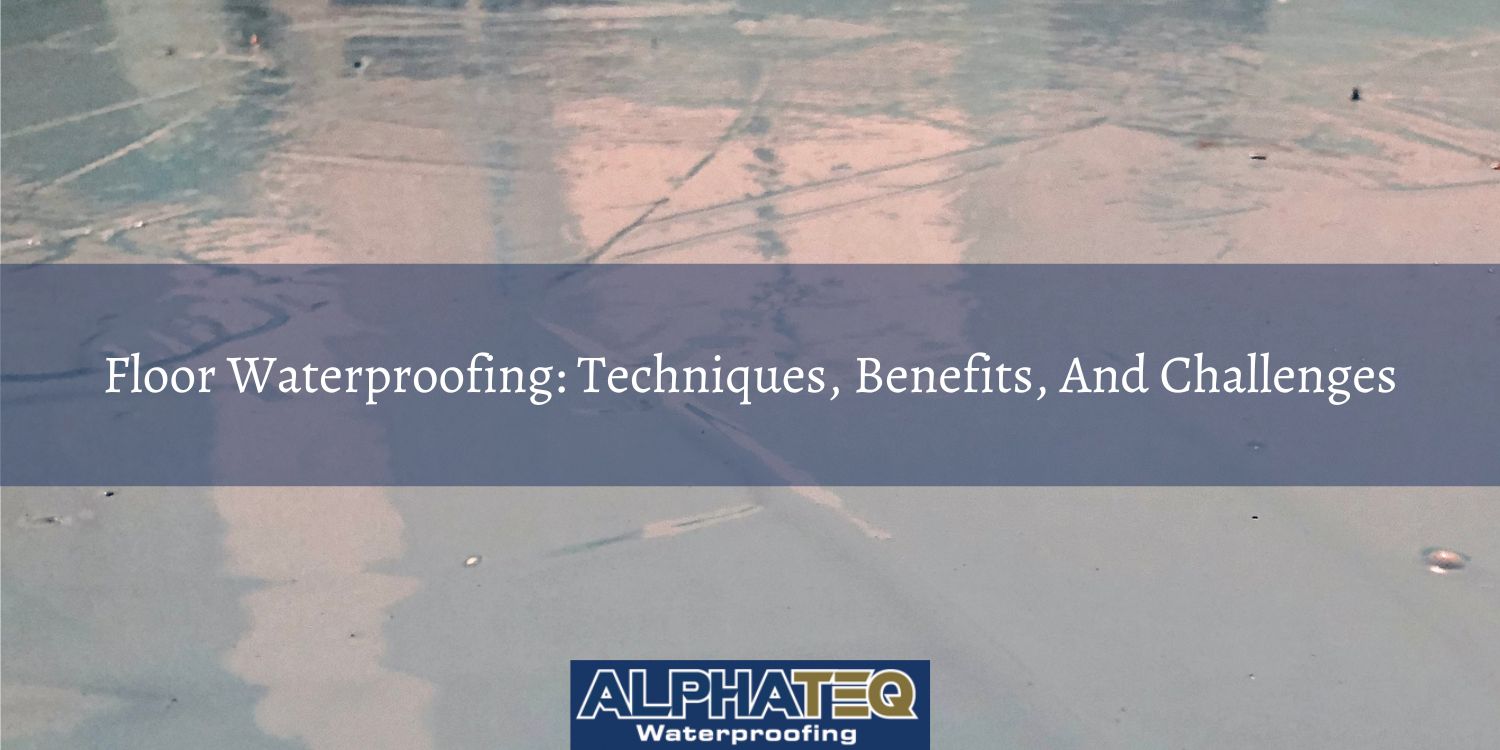
Floor waterproofing is a specialised construction technique designed to protect and seal the surfaces of floors, preventing water infiltration and moisture-related damage. This process involves the application of waterproofing materials or systems, such as membranes, coatings, or sealants, to the floor substrate, creating an impermeable barrier. Floor waterproofing is commonly used in areas exposed to water or high humidity, such as basements, bathrooms, and commercial spaces. It ensures the longevity of the floor, prevents structural issues, and safeguards against mould, mildew, and other water-related damage, making it a vital aspect of building maintenance and construction.
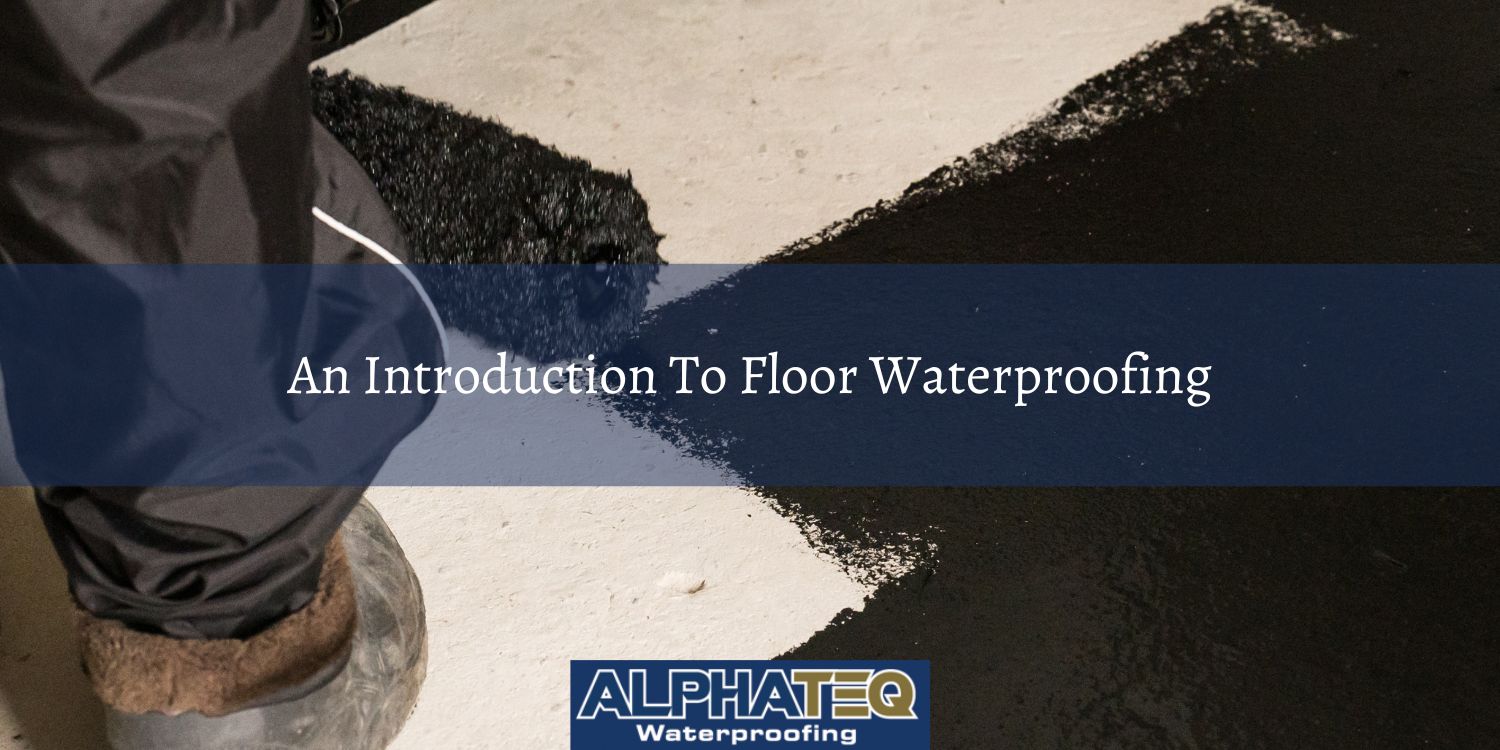
In the realm of construction and building maintenance, floor waterproofing stands as a crucial safeguard against water-related damage and structural issues. This subsection provides an introduction to floor waterproofing, offering insights into what it entails, its significance, and the potential consequences of inadequate implementation.
Floor waterproofing is a specialised construction practice that focuses on fortifying floor surfaces against water infiltration and moisture-related harm. Through the application of waterproofing materials or systems, such as membranes, coatings, or sealants, a protective barrier is established on the floor substrate. This barrier is designed to be impermeable to water, thus preventing moisture from seeping into the underlying structure. Floor waterproofing is typically employed in areas that are prone to water exposure or high humidity levels, such as basements, bathrooms, kitchens, and commercial spaces. It plays a pivotal role in ensuring the longevity of floors, warding off structural problems, and mitigating the risks associated with mould and mildew growth.
The significance of floor waterproofing cannot be overstated. It serves as a fundamental line of defence against the detrimental effects of moisture infiltration. By creating a robust and watertight seal on floors, waterproofing systems protect the structural integrity of buildings and enhance their longevity. Furthermore, floor waterproofing helps maintain indoor air quality by preventing mould and mildew growth, which can have adverse health effects. In commercial and industrial settings, it is vital for preserving equipment, inventory, and workspaces from water damage. Beyond structural preservation, it contributes to the overall safety and functionality of spaces exposed to moisture, providing peace of mind to property owners and occupants.
Inadequate floor waterproofing can lead to a host of detrimental consequences, ranging from structural degradation to health hazards and financial burdens. Without effective waterproofing measures in place, floors are susceptible to water infiltration, resulting in the weakening of concrete or wood, cracks, and even structural failure over time. Moreover, the presence of moisture can foster the growth of mould and mildew, posing health risks to occupants and necessitating costly remediation efforts. Additionally, water-damaged floors can lead to the deterioration of interior finishes, flooring materials, and the overall aesthetic appeal of spaces, ultimately impacting property values. Therefore, understanding the importance of proper floor waterproofing and its consequences underscores its necessity in construction and building maintenance.
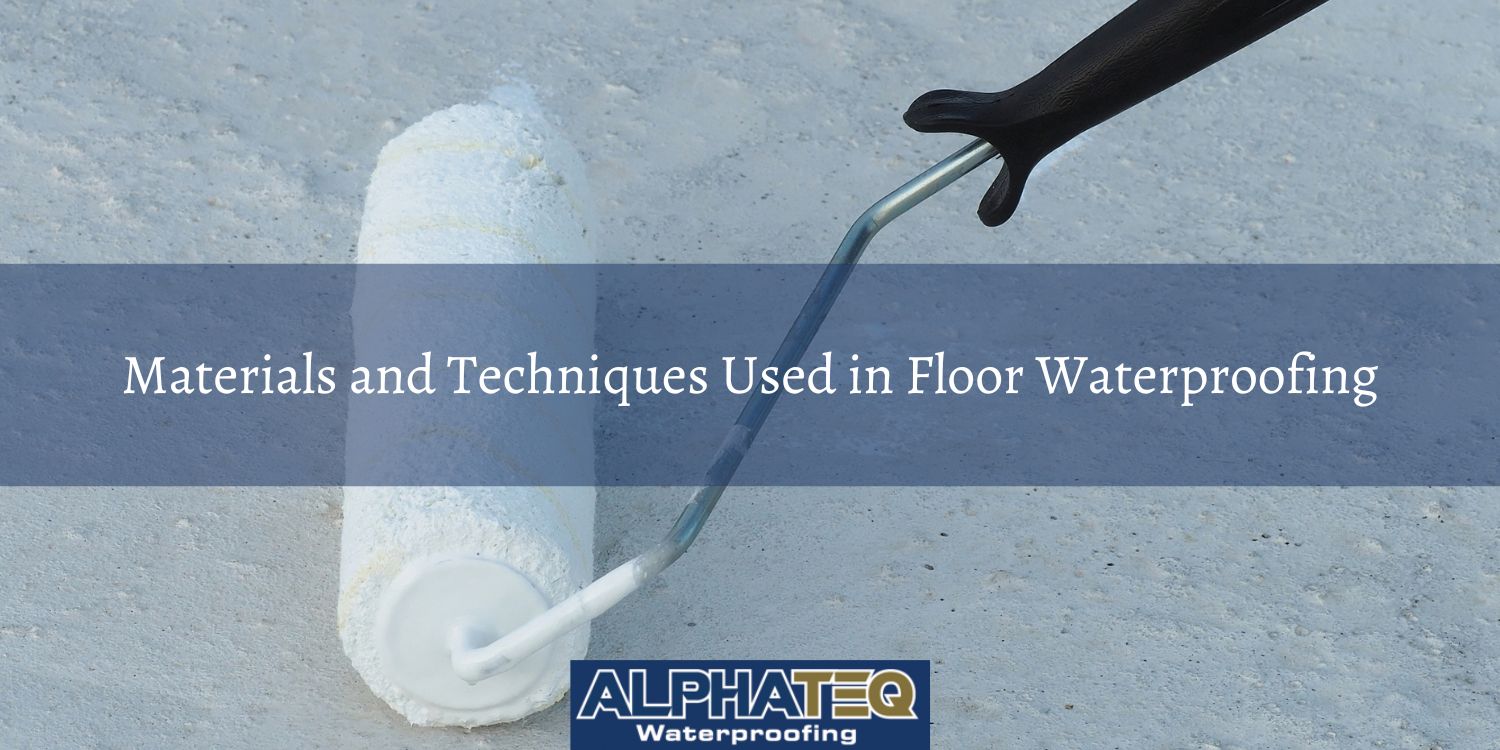
Floor waterproofing encompasses a variety of materials and techniques aimed at creating a robust protective barrier against moisture infiltration. In this section, we'll delve into the key materials and techniques commonly employed in floor waterproofing, including waterproofing membranes, liquid-applied waterproofing, cementitious waterproofing, and epoxy and polyurethane coatings.
Waterproofing membranes are a widely used method in floor waterproofing. These membranes, typically made from materials like bitumen, PVC, or modified bitumen, are applied as sheets or rolls over the floor substrate. They create a continuous and impermeable barrier that effectively seals the surface against water penetration. Waterproofing membranes are known for their durability and resistance to moisture and are often used in areas with heavy foot traffic or where a high degree of protection is required.
Liquid-applied waterproofing systems involve the application of liquid coatings or sealants directly onto the floor surface. These coatings can be made from various materials, including polyurethane, epoxy, or acrylic compounds. Once applied, they form a seamless and flexible membrane that adheres to the floor substrate, providing excellent water resistance. Liquid-applied waterproofing is known for its versatility and suitability for irregular or complex floor surfaces, making it a popular choice in both residential and commercial applications.
Cementitious waterproofing systems utilize cement-based formulations that are mixed with water to form a slurry or mortar. This mixture is then applied to the floor surface, where it penetrates into the pores of the substrate, effectively blocking the passage of water. Cementitious waterproofing is particularly suitable for concrete floors and offers good adhesion and durability. It can be used in a variety of applications, including basements and underground structures.
Epoxy and polyurethane coatings are well-regarded for their exceptional durability and chemical resistance. These coatings are applied directly onto the floor surface, where they create a strong and impermeable layer. Epoxy coatings are often used in industrial settings where resistance to chemicals, abrasion, and heavy loads is essential. Polyurethane coatings, on the other hand, offer flexibility and are suitable for commercial and residential floors that require both water resistance and aesthetic appeal.
In summary, floor waterproofing relies on a range of materials and techniques, including waterproofing membranes, liquid-applied systems, cementitious solutions, and epoxy and polyurethane coatings. The choice of the most suitable method depends on factors such as the type of floor, environmental conditions, and the desired level of protection, ensuring that floors remain resilient and impervious to moisture infiltration.
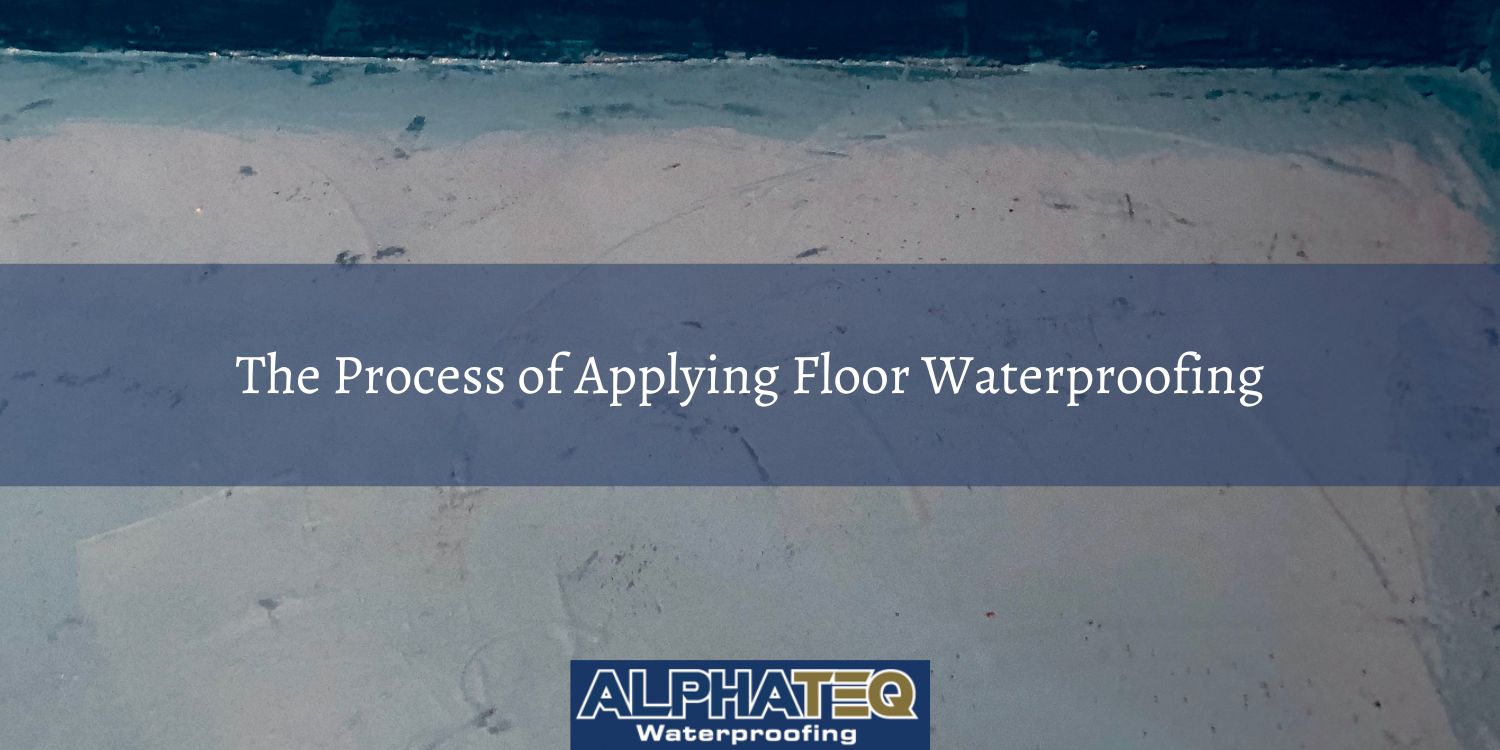
The process of applying floor waterproofing is a critical phase that determines the effectiveness and longevity of the protective barrier. This subsection outlines the key steps involved in the application of floor waterproofing, including surface preparation, the application of the waterproofing layer, the addition of a protective layer if necessary, and quality control measures during and after application.
Surface preparation is the initial and essential step in the floor waterproofing process. Before applying any waterproofing materials, the floor substrate must be thoroughly cleaned and prepared. This involves removing any debris, dirt, or contaminants from the surface. In some cases, it may also entail repairing cracks, joints, or defects in the floor. Proper surface preparation ensures that the waterproofing material adheres effectively and uniformly to the floor, preventing potential weak points that could compromise the barrier's integrity.
The application of the waterproofing layer follows surface preparation. The choice of waterproofing material, whether it's a membrane, liquid coating, cementitious mixture, or epoxy/polyurethane system, dictates the application method. Waterproofing membranes are rolled or adhered to the floor, while liquid coatings are applied using brushes, rollers, or sprayers. Cementitious waterproofing is typically mixed and troweled onto the floor surface, and epoxy/polyurethane coatings are poured or rolled out. The goal is to create a continuous and uniform layer that covers the entire floor area, ensuring no gaps or weak points where water could infiltrate.
In some cases, an additional protective layer may be applied on top of the waterproofing layer for added durability or specific functional requirements. This protective layer could be a wear coat for floors subject to heavy traffic, an anti-slip surface for safety, or a decorative finish for aesthetic purposes. The choice of the protective layer depends on the floor's intended use and environmental conditions. Applying this layer is essential to preserve the integrity of the waterproofing system and ensure it performs optimally over time.
Quality control measures are crucial during and after the application of floor waterproofing. During application, it is essential to monitor the proper mixing and application of materials, ensuring that the manufacturer's guidelines and industry standards are followed meticulously. Post-application inspections and tests may also be conducted to check for any defects, weak points, or areas that require additional attention. Regular maintenance and periodic inspections throughout the floor's lifecycle further contribute to its long-term effectiveness and can identify potential issues for timely remediation.
In conclusion, the process of applying floor waterproofing involves critical stages, including surface preparation, the application of the waterproofing layer, the addition of a protective layer if necessary, and diligent quality control measures. Proper execution of these steps ensures the creation of a resilient and durable waterproofing system that effectively protects the floor substrate from moisture infiltration and related damage.

Floor waterproofing offers a range of significant advantages that extend beyond just protecting the immediate structure. In this subsection, we explore the benefits of floor waterproofing, including protection against water damage and moisture intrusion, enhancing the durability of the floor, increasing property value, and creating a healthier living environment.
The primary benefit of floor waterproofing is its ability to provide robust protection against water damage and moisture intrusion. By creating an impermeable barrier, waterproofing systems prevent water from seeping into the floor substrate, thus averting structural weakening, cracks, and deterioration. This protection is especially critical in areas prone to water exposure, such as basements, bathrooms, and kitchens, where moisture can lead to costly repairs and health hazards.
Floor waterproofing significantly enhances the durability and lifespan of the floor. Moisture infiltration can weaken concrete or wood flooring over time, leading to cracks, warping, and degradation. Waterproofing materials and techniques effectively shield the floor from these issues, ensuring it remains structurally sound and intact. In commercial and industrial settings, where floors are subjected to heavy loads and harsh conditions, waterproofing extends the life of the floor and reduces maintenance costs.
Floor waterproofing plays a crucial role in creating a healthier living or working environment. Moisture infiltration can lead to the growth of mould and mildew, which release allergens and can have adverse health effects, particularly for individuals with respiratory conditions. By preventing the development of mould and maintaining indoor air quality, waterproofed floors contribute to a safer and more comfortable living space.
In summary, the benefits of floor waterproofing encompass protection against water damage and moisture intrusion, enhanced floor durability, and the creation of a healthier living environment. These advantages make floor waterproofing an indispensable practice for both residential and commercial properties, ensuring long-term structural integrity and occupant well-being.

While floor waterproofing offers numerous benefits, it is not without its limitations and challenges. In this subsection, we explore some of the common limitations and challenges associated with floor waterproofing, including application conditions and challenges, the requirement for professional installation in some cases, cost considerations, and the limitations of certain waterproofing systems for specific flooring materials.
The successful application of floor waterproofing is contingent on favourable conditions. In some cases, environmental factors such as temperature, humidity, and weather conditions can pose challenges. For example, extremely cold or wet conditions may affect the curing process of certain waterproofing materials, potentially compromising their effectiveness. Proper surface preparation and addressing any pre-existing structural issues are essential for achieving the desired results. Additionally, areas with irregular or complex floor geometries may require specialised techniques to ensure complete and uniform coverage.
While some floor waterproofing methods may be suitable for DIY enthusiasts, others demand professional installation to guarantee effectiveness. Complex application procedures, the need for specialised equipment, and the importance of precise material selection are factors that often necessitate professional expertise. Inadequate installation by untrained individuals can result in compromised waterproofing performance and costly repairs down the line. Property owners should assess the complexity of the project and consider consulting waterproofing experts when in doubt.
Cost considerations are an inherent challenge in floor waterproofing projects. The expense associated with floor waterproofing varies depending on factors such as the choice of materials, the size of the area to be waterproofed, and the complexity of the application. While investing in quality waterproofing is crucial for long-term protection, budget constraints can be a limiting factor. Property owners should carefully balance the costs of waterproofing against the potential expenses of water-related damage and repairs.
Not all waterproofing systems are compatible with every type of flooring material. Certain waterproofing materials may not adhere effectively to certain flooring surfaces, leading to adhesion issues and reduced performance. For example, waterproofing systems designed for concrete may not be suitable for wood or tile floors due to differences in substrate properties. Selecting the appropriate waterproofing system that matches the specific flooring material is essential to ensure a durable and reliable waterproofing solution.
In summary, floor waterproofing, while offering substantial benefits, comes with limitations and challenges related to application conditions, the need for professional installation, cost considerations, and compatibility with specific flooring materials. By addressing these factors and tailoring the waterproofing approach to the unique requirements of each project, property owners can achieve effective moisture protection and safeguard the longevity of their floors.
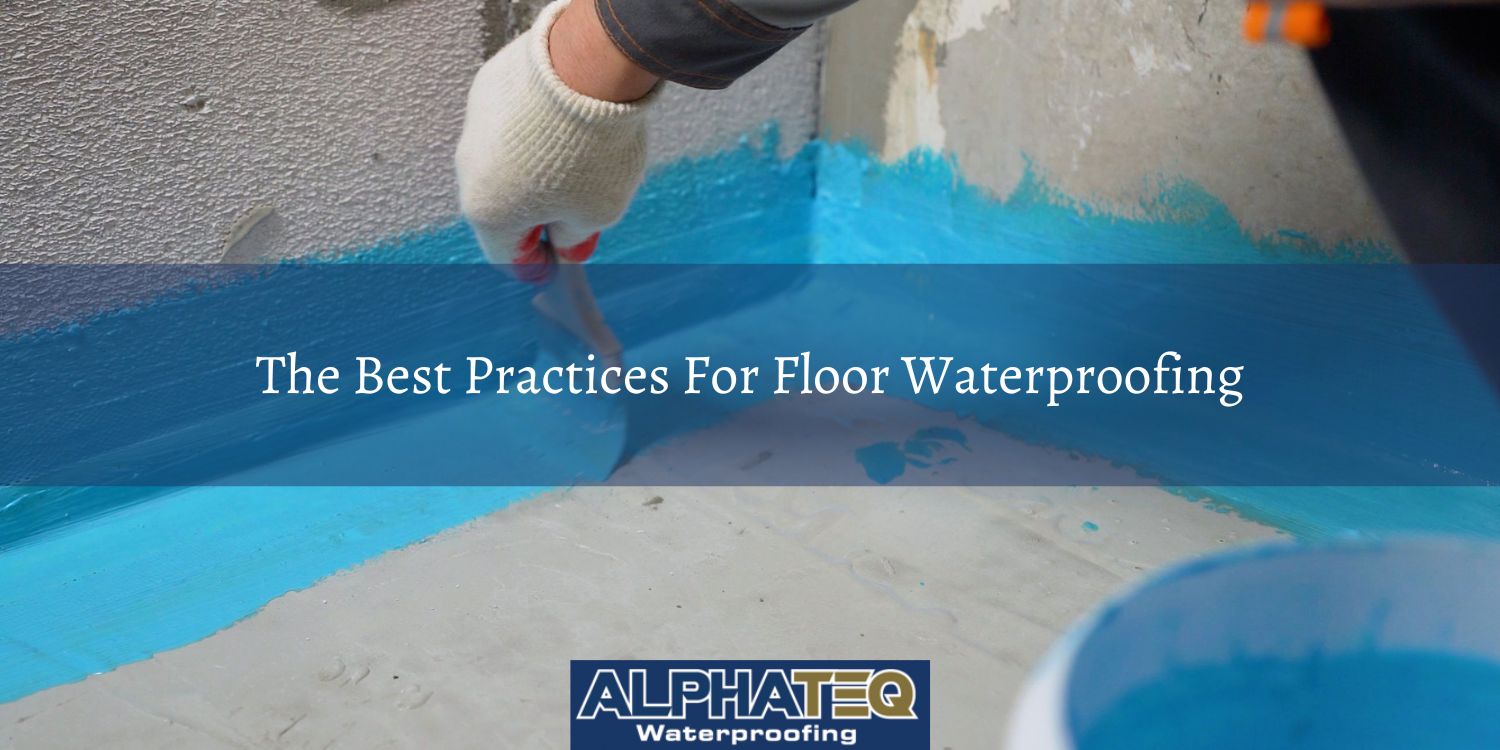
To maximize the effectiveness and longevity of floor waterproofing systems, adhering to best practices is essential. In this subsection, we explore key guidelines and best practices for achieving successful floor waterproofing, emphasising the importance of proper application, the role of regular maintenance and inspections, and ensuring quality control and compliance with industry standards.
The proper application of floor waterproofing materials is fundamental to the success of any waterproofing project. Adhering to manufacturer recommendations, industry standards, and established guidelines is crucial. Ensuring that the floor surface is meticulously prepared, cracks and defects are addressed, and the chosen waterproofing method is applied correctly helps create a robust and impermeable barrier. Whether utilising waterproofing membranes, liquid coatings, cementitious solutions, or epoxy/polyurethane systems, following established procedures and employing skilled professionals is paramount in achieving the desired level of protection.
Long-term maintenance and regular inspections play a pivotal role in preserving the effectiveness of floor waterproofing systems. Routine maintenance activities, tailored to the specific flooring material and waterproofing method, can extend the life of the waterproofing and prevent potential issues. Tasks may include cleaning, surface inspections, and reapplication of protective coatings or sealants as needed. Proper drainage systems should be maintained to prevent water buildup around the structure. Additionally, prompt addressing of any new cracks or damage ensures the continuous protection of the floor. Regular inspections throughout the floor's lifecycle help identify potential issues early and facilitate timely remediation.
Quality control measures are indispensable during the floor waterproofing process. Employing quality control protocols during installation helps verify that the waterproofing materials are mixed and applied correctly and that the finished product meets required standards. Inspections and tests may be conducted to check for any defects, weak points, or areas that require additional attention. Compliance with industry standards and manufacturer guidelines is essential in achieving a reliable and durable waterproofing system. Property owners, contractors, and waterproofing professionals should ensure that the materials used and installation practices adhere to recognised standards for waterproofing performance.
In summary, best practices for floor waterproofing encompass the importance of proper application, the role of regular maintenance and inspections, and ensuring quality control and compliance with industry standards. By following these guidelines, property owners can maintain the integrity of their waterproofing systems, protect their floors from moisture infiltration, and mitigate the risks associated with water-related damage.